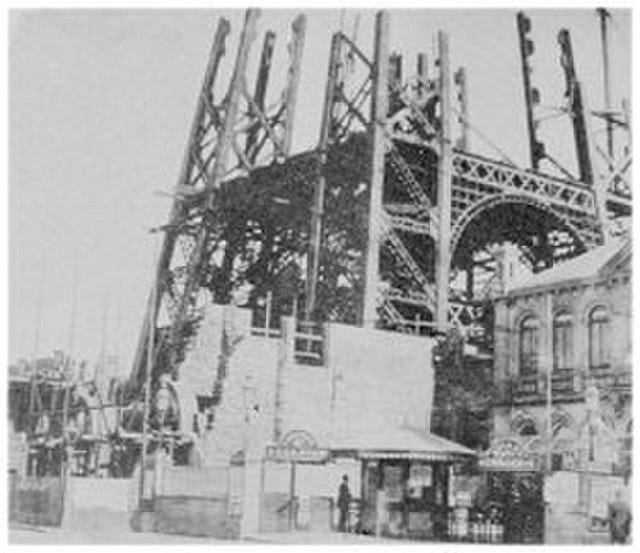The story of the construction of Blackpool Tower from objections to success
Local historian and writer Colin Reed looks at the history of the construction of Blackpool Tower
It was the financial success of the Eiffel Tower that had other entrepreneurs excited about constructing a tower of their own, but of all the many proposals and attempts, the one at Blackpool is the only one that has stood the test of time.
Proud as the Eiffel stood, there was a lot of opposition as iron was considered the ugly duckling of traditional architecture which at the time adhered strongly to time honoured stone. Iron and steel, the new kids on the block, would never achieve the aesthetic heights of traditional architecture and was best left for bridges and other such functional elements which could only have function while being devoid of beauty. To create such a structure against this opposition required a confidence in the engineers and their craftsmen and labourers, and the right, competent business men to handle the £25m that the Blackpool Tower is estimated to have cost to build.
The scheme, initiated by a syndicate of businessmen from Manchester and London, was first created later in 1890. The Blackpool contingent of businessmen became involved when this syndicate was inspecting the Aquarium site and travelled down to London in December to have talks to encourage it to pursue its purpose in choosing their hometown as other sites had been suggested.
Resulting from this, a contract was secured in the following January and the London Standard Debenture Company would secure £150,000 (£16,120,560.59) for the Blackpool project. Shares were offered for sale and taken up in encouraging amounts.
However this company eventually stalled in its commitments, and found itself in financial trouble and, at the end of May of 1891 Mayor John Bickerstaffe, was asked to become the company chairman, negotiating a favourable separation from the London Standard Company, leading to the eventual registration of The Blackpool Tower Company in London in July 1891.
The first boring operations had already been carried out next to the aquarium site in the previous January and, having reached a depth of 40 feet (12.19m) into the clay, the foundations for a tower of approximately 450-500 feet high (121.92m and 137.16m) were considered satisfactory.
The architects, Maxwell and Tuke, had also already been appointed by this time and the statement of the new company proposed to erect a tower, similar to that of the Eiffel Tower in Paris, but to include additional buildings and places of entertainment. The idea of course was to provide the investors with a ‘handsome permanent revenue’.
The first meeting of the company left those present in a confident mood. Blackpool was an adventurous place and could provide both the best entertainment and attractions for visitors and the best return on investments for shareholders. As the 'Brighton of the North', it was genuinely considered the best place possible to build a new concept.
But when the prospectus of the company was made public on 25 July, with its expression of intent for the provision of the profitable amenities of entertainment for the public which included alcohol, it met stiff opposition from the Temperance League, led by the vociferous Rev Balmer. It would take over two years before a licence would be granted, and then only with a compromise.
Keep reading with a 7-day free trial
Subscribe to The Blackpool Lead to keep reading this post and get 7 days of free access to the full post archives.




